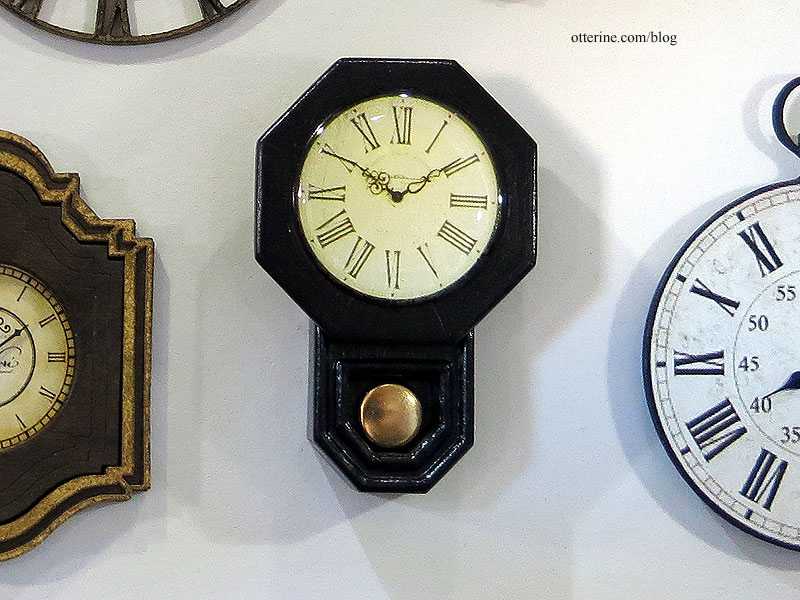I’m going to split the clock posts into a few to make it easier to navigate and manage. Many of the clocks in Half Clocked were purchased and a few were gifted, but a lot of them were made from kits and spare parts.
Miss Lydia Pickett Cottage Clock – made from a kit
The one I spent the most time on was the Miss Lydia Pickett Cottage Clock (the construction ends here, but you can follow the posts back to see the whole process). This started as a 1:12 scale kit by Robin Betterley’s Miniatures.
I love Swedish Mora clocks, and if you do a google image search you will find an array of colors and styles. I’ve always been drawn to blue ones. I know the kit clock isn’t the traditional shape for the Mora clock, but it lent itself well to modification with that style in mind. I altered the top scrollwork, switched the skirts for bun feet and added a top finial, just for starters. The top and body doors don’t open and making opening doors wasn’t something I wanted to spend time on, but there’s no reason you can’t add faux detailing. I took some 3/16″ hinges and made notches to insert them later after painting.
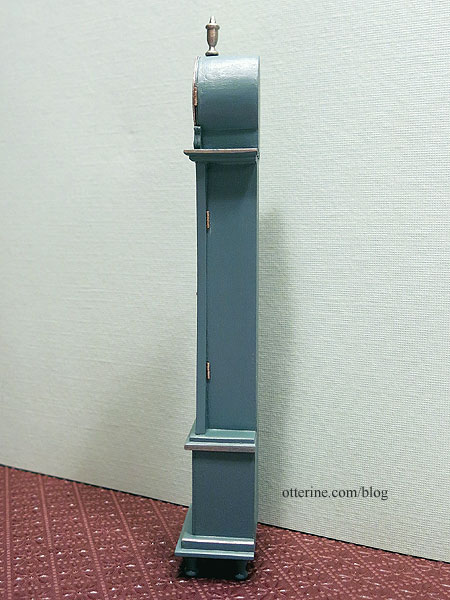
I painted the clock Greenscape by Folk Art and finished with Delta Ceramcoat Satin Varnish. The artwork for the body and base is from The Graphics Fairy. I used the image as is for the base but then used elements from the original to create a design for the body in PhotoShop.
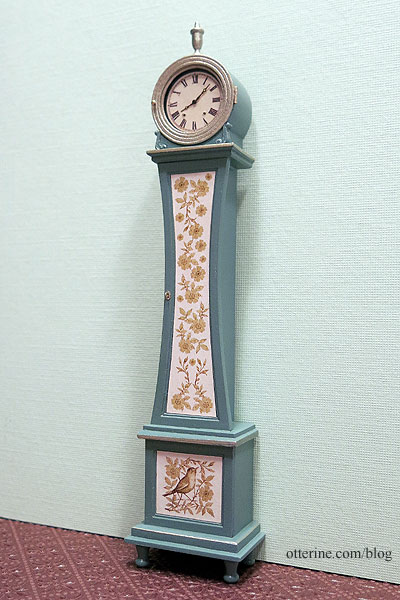
I printed a regular clock dial in a similar color to the body art as a replacement. I painted the clock face trims and the finial Taupe Metallic by Folk Art. I painted some accents in the same color on the body and base. The hands are Susanne Russo brasses, a lovely find of new old stock at a local show. I drilled winding holes as accents, lining them with a bit of paint.
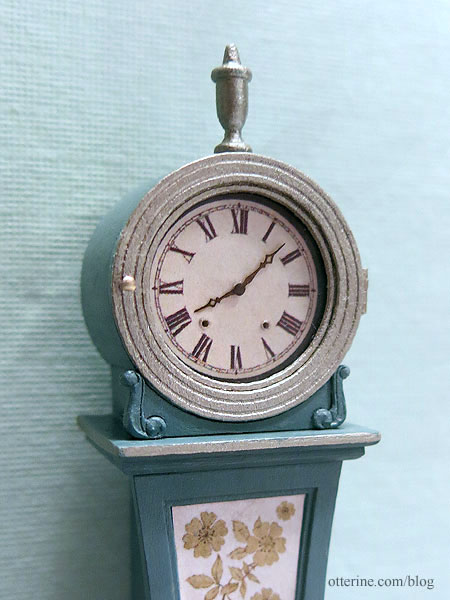
Now I have a lovely Mora clock in mini. :]
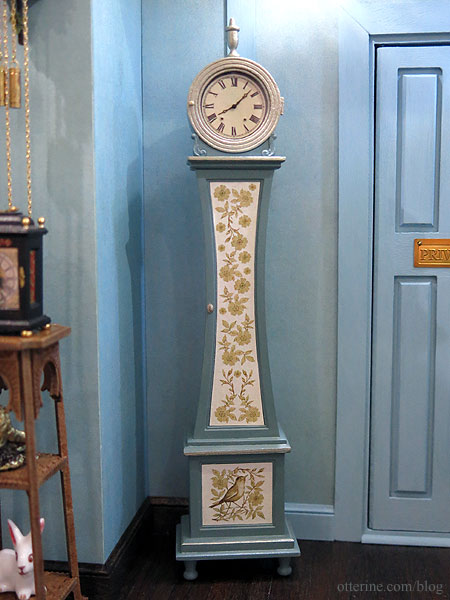
Chrysnbon Clocks – made from kits
Debora sent me the Chrysnbon Curio Clock kit, and I found the Chrysnbon Grandfather Clock kit at a local show. These are plastic but make up so well with a little bit of care and patience.
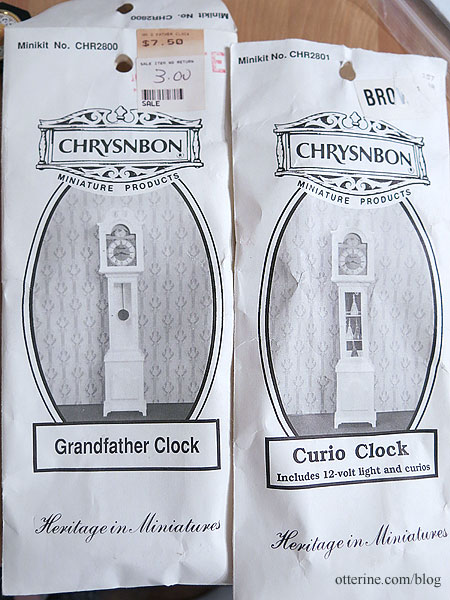
I primed both clocks in grey to remove the translucence of the plastic. After priming in grey, I sprayed the Grandfather Clock flat white. The final finish is Model Masters Wimbledon White, a leftover from the Model T.
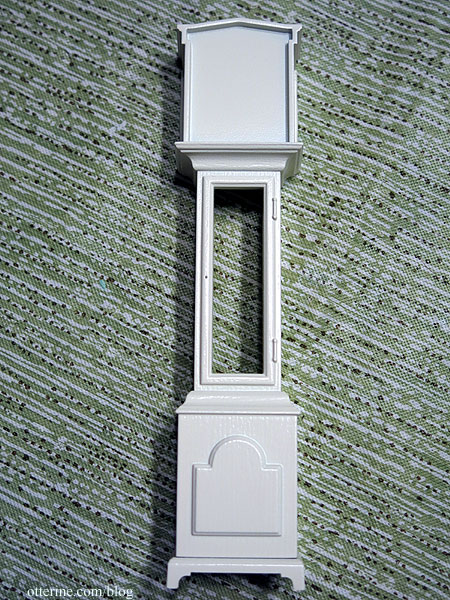
This has a replacement dial made from a found image that I edited in PhotoShop. I pasted the printed face to heavier cardstock and used the kit sticker shape as a template to cut the face to fit. The face is glued in place.
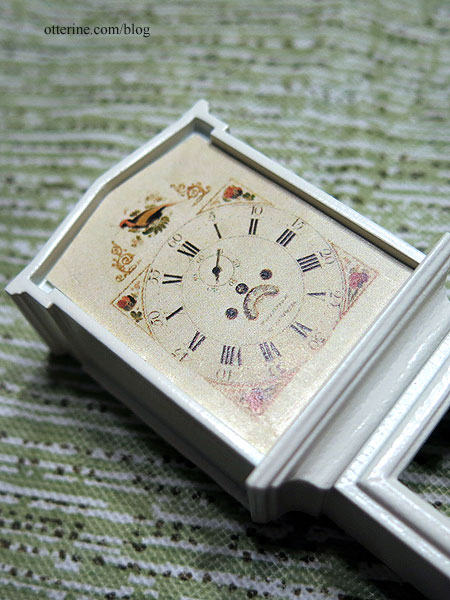
I drilled a hole in the center.
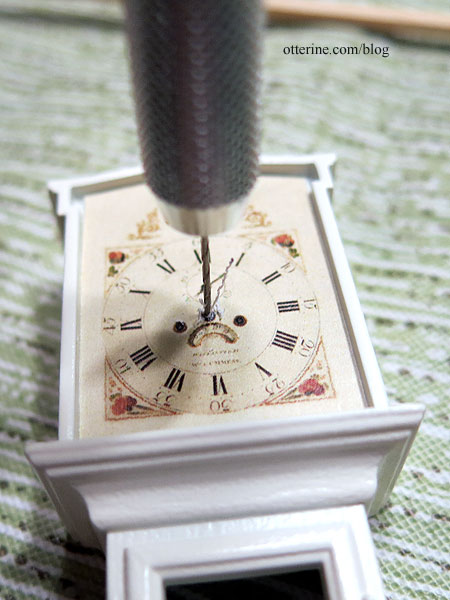
The hands are watch parts, held in place with a tiny brad.
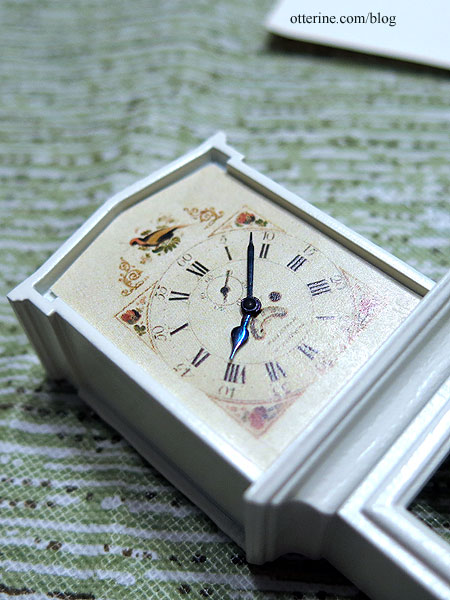
The flimsy acetate can look warped when glued, and in old kits it can be yellowed or brittle. I cut new pieces from 0.03″ thick plastic sheet.
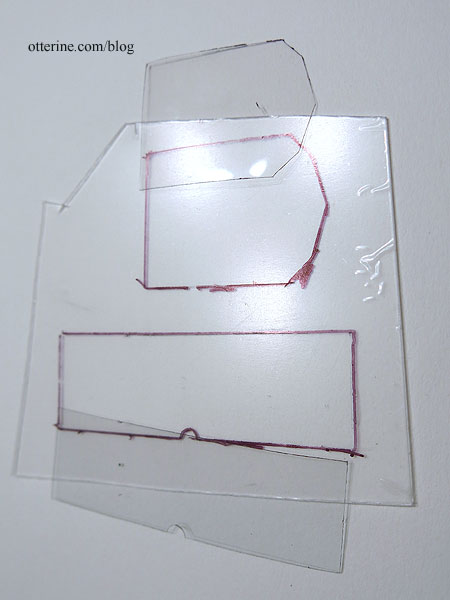
To glue these parts, I used Testors Clear Parts Cement and Window Maker.
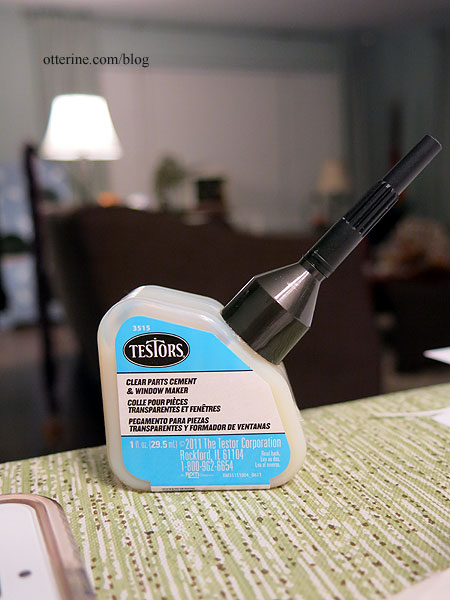
You still need a bond that is plastic to plastic, so I scraped away the paint at the joins.
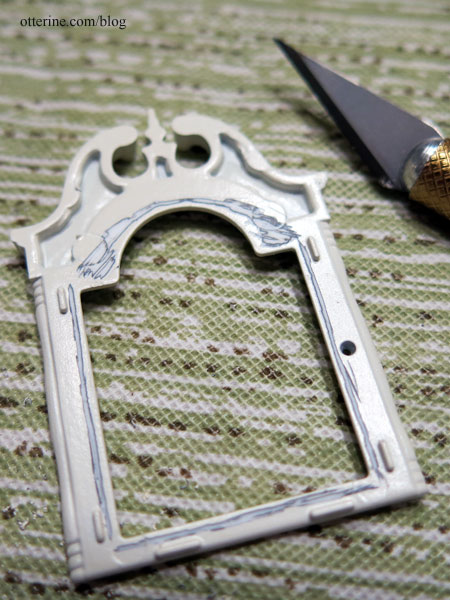
I painted the molded hinges and knobs Liquitex Iridescent Bronze. The brass pendulum rod and bob are included in the kit and are good quality.
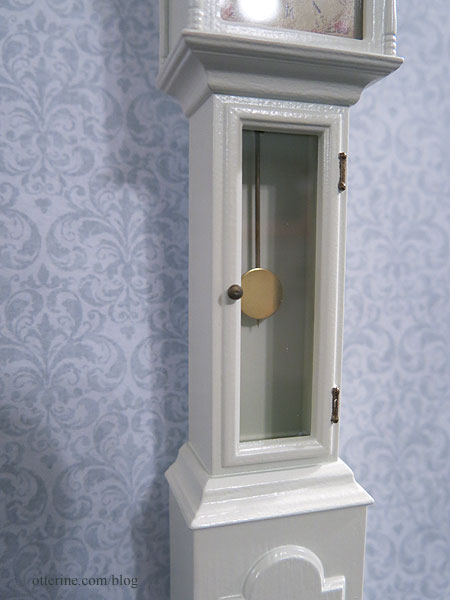
I love the way this clock turned out with the soft finish and delicate face.
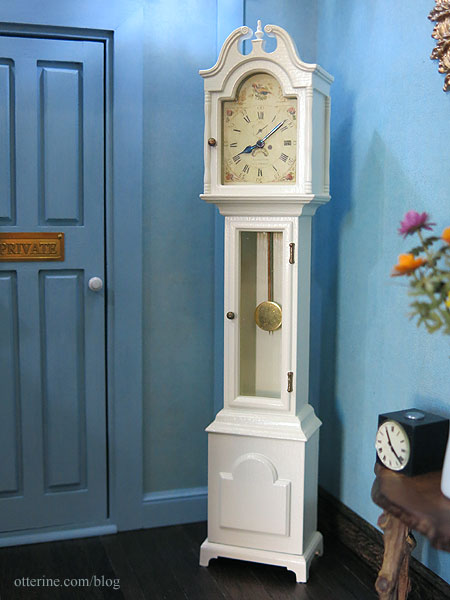
The Curio Clock was finished in Testors Semi Gloss Black. It gives a great sheen without being overpowering. I ended up converting it from a curio clock to a true grandfather clock with parts from a defunct House of Miniatures clock that could not be salvaged. I did run a wire for this clock’s light in the open space up front just in case, but I thought it was more striking with a brass pendulum.
First, I cut a new back from styrene sheet since the original was to be enclosed with a mirror back. I painted this to match the body.
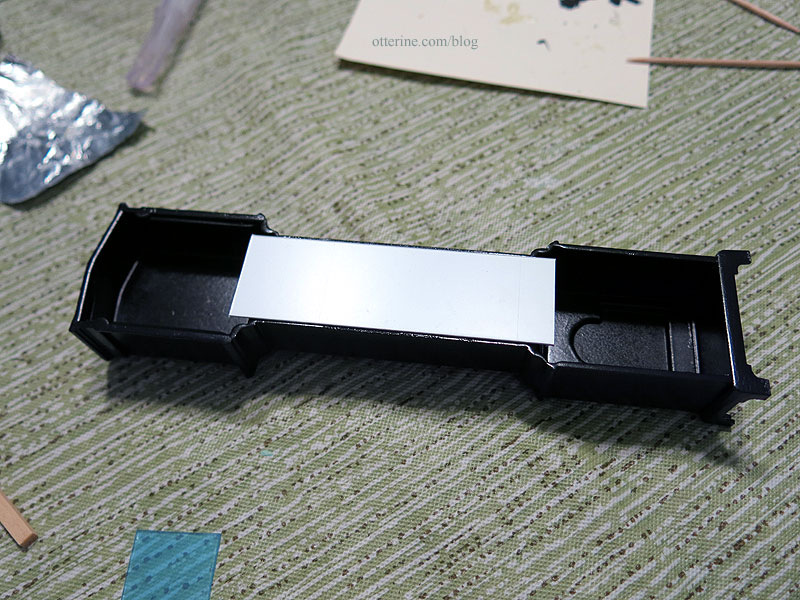
The clock has a hole for the curio light bulb that was too large for the brass pendulum rod. I cut a piece of styrene and drilled a smaller hole for the rod. Super glue gel holds the rod at the right height and holds the patch in place inside the upper compartment.
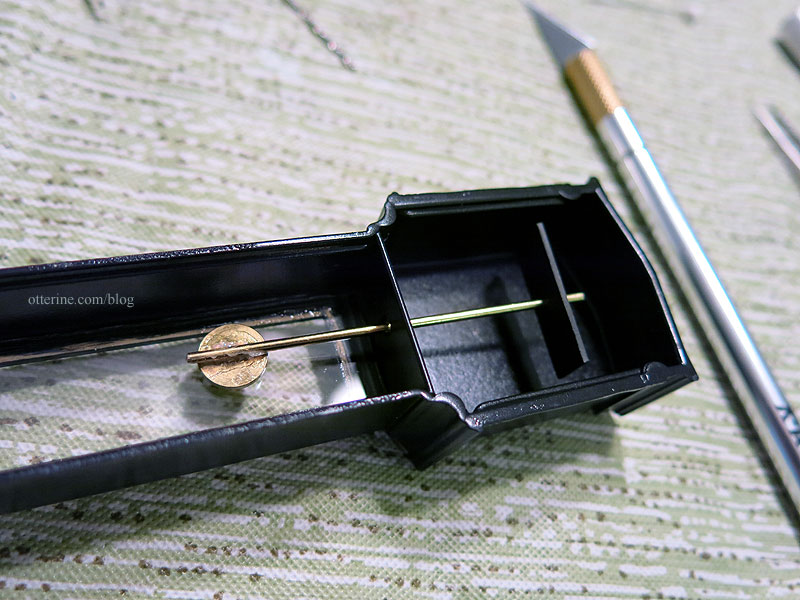
The dial is a replacement. I edited a found image in PhotoShop and used that instead. The hands are watch parts held in place with a tiny brad.
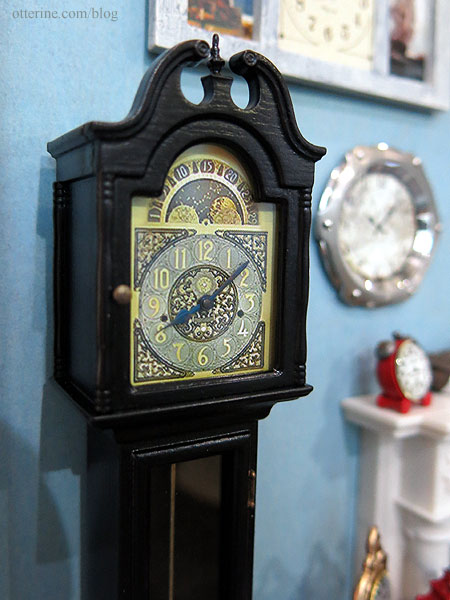
It looks very rich in black and brass. Again, the molded hinges and knobs are painted Liquitex Antique Bronze.
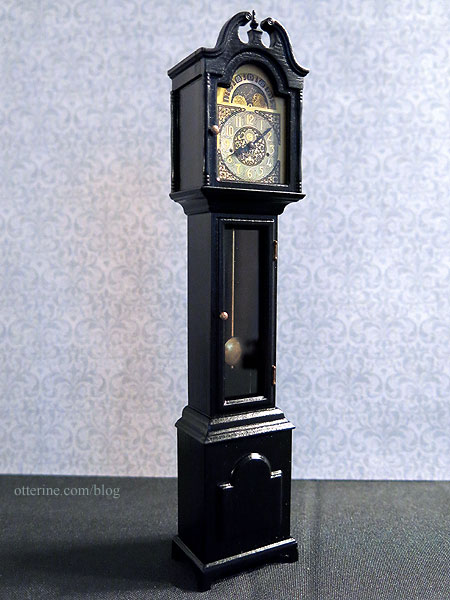
The Chrysnbon wall clock was something I never thought I would make. I bought the kit for the old telephone parts and the coat rack, but it was nice to have it as wall filler.
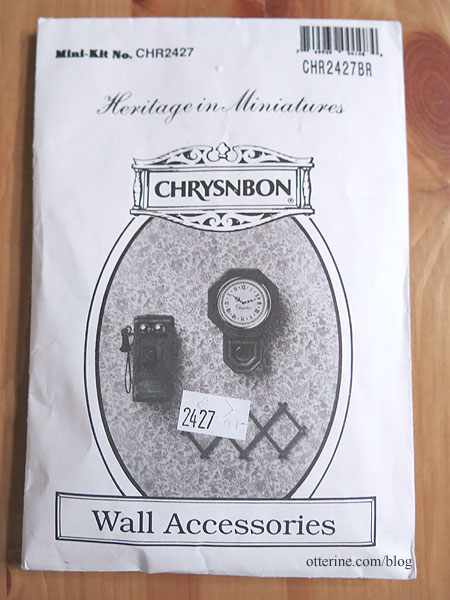
With a replacement dial it really shines. This is finished in Testors Semi Gloss Black.
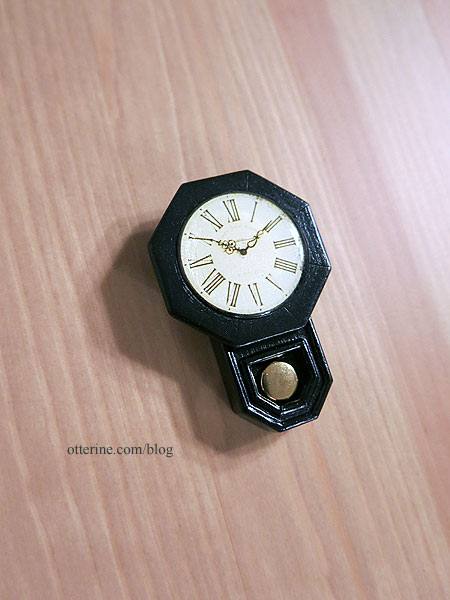
This has a printed face under a cabochon sticker that mimics a curved glass cover.
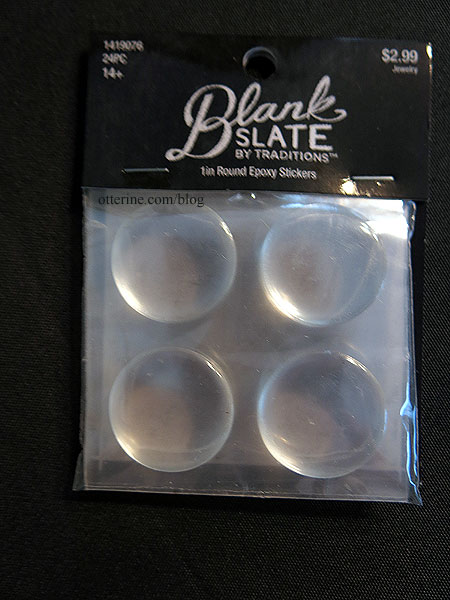
The new and improved clock found a place of prominence on the main gable. Not a filler clock, after all.
